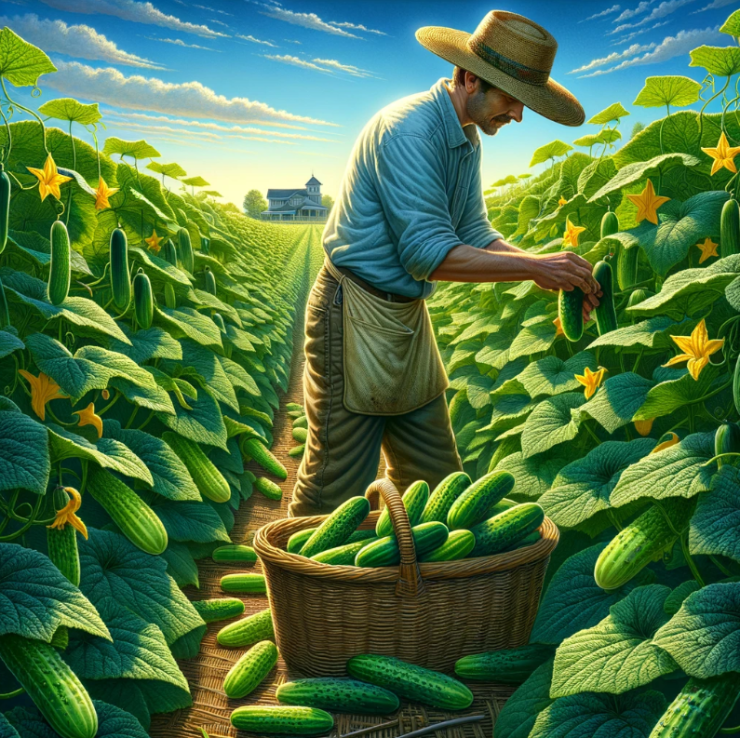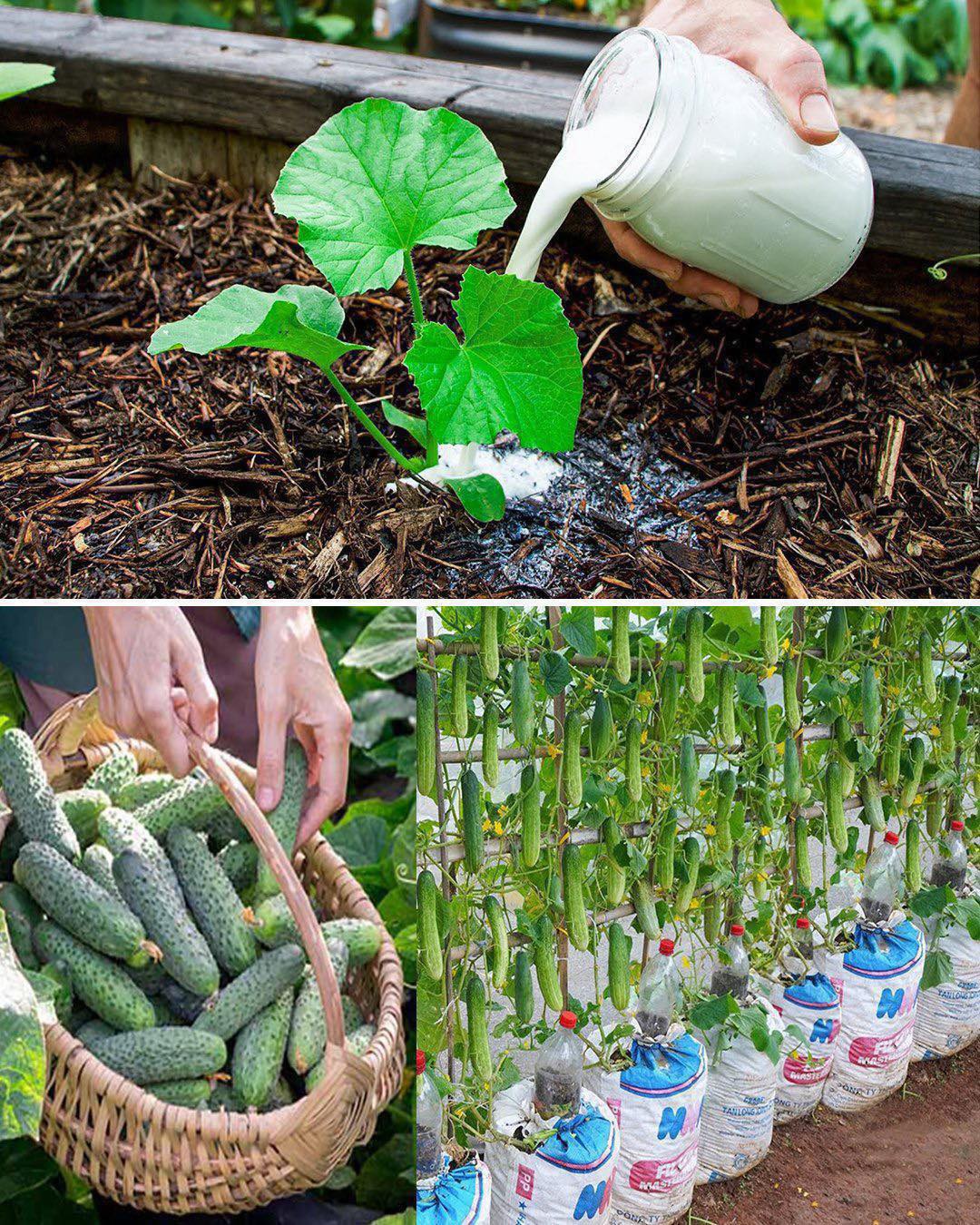Cucumbers are a delightful addition to any garden, offering crisp texture and refreshing flavor to salads, sandwiches, and snacks. However, like any plant, cucumbers are susceptible to various diseases that can hinder growth and reduce yields. In this comprehensive guide, we’ll explore effective strategies to prevent diseases and maximize harvests in cucumber plants, ensuring a bountiful supply of this beloved vegetable.

Importance of Disease Prevention
Diseases can wreak havoc on cucumber plants, causing stunted growth, wilting, yellowing of leaves, and even crop failure. By implementing proactive measures to prevent diseases, gardeners can safeguard their cucumber plants and promote robust growth, leading to abundant harvests throughout the growing season.
Choose Disease-Resistant Varieties
When selecting cucumber varieties for your garden, opt for disease-resistant cultivars whenever possible. Many seed suppliers offer cucumber varieties bred to resist common diseases such as powdery mildew, downy mildew, cucumber mosaic virus, and bacterial wilt. These resistant varieties are specially developed to withstand disease pressure, providing a higher likelihood of successful cultivation and larger harvests.
Practice Crop Rotation
Crop rotation is a vital practice that helps prevent the buildup of soil-borne pathogens and reduces the risk of disease transmission from one growing season to the next. Avoid planting cucumbers and other members of the cucurbit family (such as squash, melons, and pumpkins) in the same location year after year. Instead, rotate crops to different areas of the garden to disrupt disease cycles and maintain soil health.
Provide Adequate Sunlight and Air Circulation
Cucumber plants thrive in sunny, well-ventilated environments. Ensure that your garden receives ample sunlight, with at least 6 to 8 hours of direct sunlight per day. Proper spacing between cucumber plants is essential to allow for adequate air circulation, which helps reduce humidity levels and minimize the risk of foliar diseases such as powdery mildew and downy mildew.
Practice Good Hygiene
Maintaining cleanliness in the garden is crucial for disease prevention. Remove and dispose of any diseased or infected plant material promptly to prevent the spread of pathogens. Avoid working in the garden when foliage is wet, as this can facilitate the spread of fungal diseases. Additionally, sanitize gardening tools, containers, and equipment regularly to minimize the risk of contamination.
Use Mulch and Drip Irrigation
Mulching around cucumber plants helps conserve soil moisture, suppress weeds, and reduce the risk of soil-borne diseases. Apply a layer of organic mulch, such as straw or shredded leaves, around the base of the plants, taking care not to pile it against the stems. Drip irrigation or soaker hoses are preferable to overhead watering, as they deliver moisture directly to the soil without wetting the foliage, thereby reducing the risk of foliar diseases.

Monitor for Pests and Diseases
Regular monitoring is essential for early detection of pests and diseases in cucumber plants. Inspect the foliage regularly for signs of insect damage, such as chewing or sucking pests, and treat infestations promptly with organic insecticides or insecticidal soaps as needed. Keep an eye out for symptoms of common cucumber diseases, including yellowing leaves, powdery white growth, and wilting, and take appropriate action to mitigate the spread.
By following these proactive strategies for disease prevention and optimizing growing conditions, gardeners can enjoy healthy cucumber plants and abundant harvests throughout the season. By selecting disease-resistant varieties, practicing crop rotation, providing adequate sunlight and air circulation, maintaining good hygiene, using mulch and drip irrigation, and monitoring for pests and diseases, you can minimize the risk of disease and maximize yields in your cucumber garden. With proper care and attention, you’ll be rewarded with a plentiful supply of fresh, flavorful cucumbers to enjoy all summer long.
News
JJ Redick reacts to Luka Doncic trade for Anthony Davis
In one of the most jaw-dropping moves of the season, the NBA landscape was rocked by the blockbuster trade involving Luka Dončić and Anthony Davis—a swap that has sent ripples of excitement, disbelief, and heated discussion through the league. Among…
Anthony Davis FULL reaction to trade to Mavericks for Luka Doncic
In a blockbuster move that sent shockwaves through the NBA and left fans reeling, Anthony Davis has been traded to the Dallas Mavericks in exchange for Luka Dončić. In the immediate aftermath of the news, Davis took to the media…
Shaq reacts to Dallas Mavericks wanting Kevin Durant after Luka-AD trade 👀
In the constantly shifting world of the NBA, trade rumors and blockbuster moves are a regular part of the season’s drama. The latest twist has fans buzzing: the Dallas Mavericks have reportedly set their sights on acquiring Kevin Durant in…
Donovan Mitchell FILTHY poster dunk on Kristaps Porzingis 😳
In a game filled with high-intensity moments and jaw-dropping highlights, one play in particular has left fans and analysts buzzing about Donovan Mitchell’s latest display of athleticism. Early in the contest, with the atmosphere already charged by an evenly matched…
Joel Embiid hits go-ahead bucket vs Mavs then chats with Anthony Davis after game
In one of the most thrilling contests of the season, Joel Embiid delivered a clutch performance against the Dallas Mavericks, punctuating the game with a go-ahead bucket that sent the home crowd into a frenzy. The atmosphere in the arena…
D’Angelo Russell game winner as Nets hit two 3’s in 3 seconds to win vs Rockets 😱
In one of the most electrifying moments in recent NBA history, D’Angelo Russell delivered an unforgettable game-winner that left fans and commentators in complete awe. With the Brooklyn Nets locked in a tense battle against the Houston Rockets, the outcome…
End of content
No more pages to load











